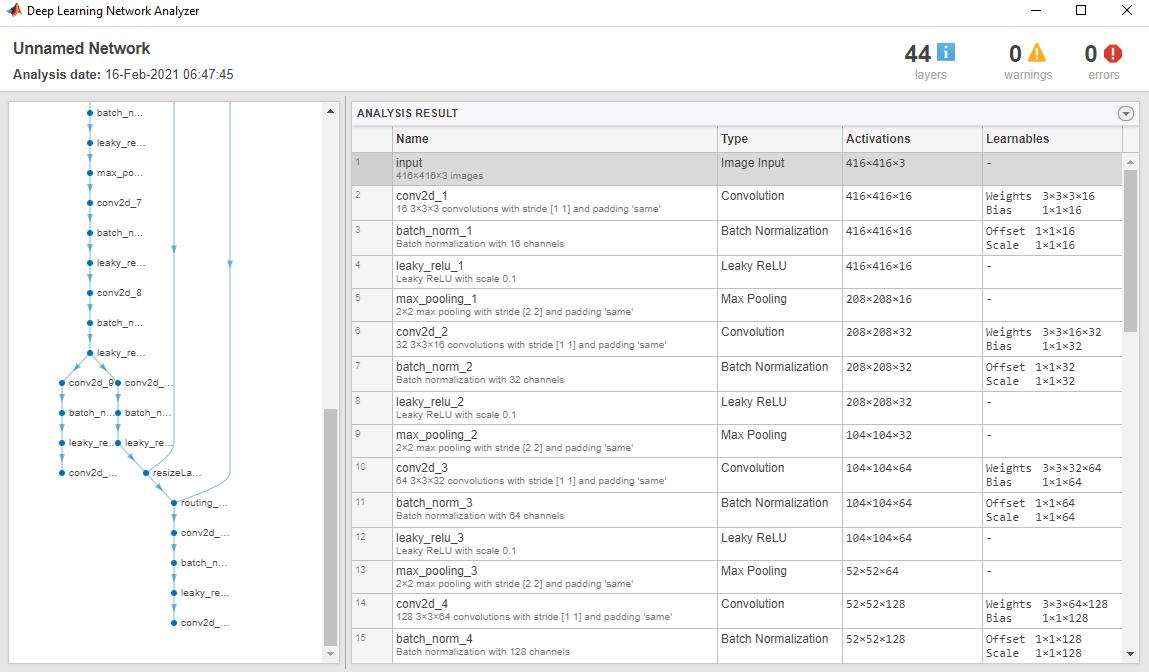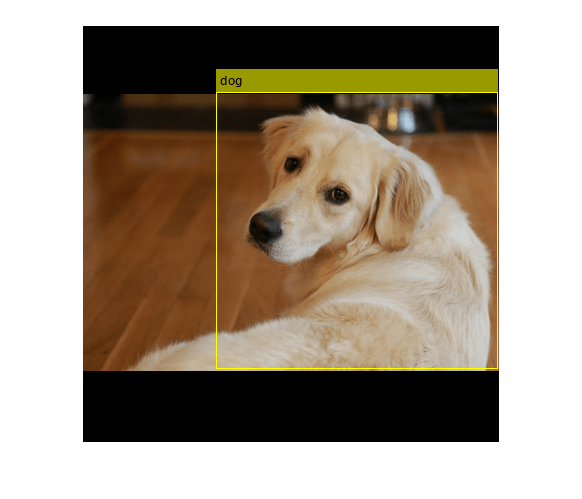yolov3ObjectDetector
Description
The yolov3ObjectDetector object creates a you only look once
version 3 (YOLO v3) object detector for detecting objects in an image. Using this object, you
can:
Create a pretrained YOLO v3 object detector by using YOLO v3 deep learning networks trained on COCO dataset.
Create a custom YOLO v3 object detector by using any pretrained or untrained YOLO v3 deep learning network.
Creation
Syntax
Description
Pretrained YOLO v3 Object Detector
detector = yolov3ObjectDetector(name)
Note
To use the pretrained YOLO v3 deep learning networks trained on COCO dataset, you must install the Computer Vision Toolbox™ Model for YOLO v3 Object Detection from Add-On Explorer. For more information about installing add-ons, see Get and Manage Add-Ons. To run this function, you will require the Deep Learning Toolbox™.
Custom YOLO v3 Object Detector
detector = yolov3ObjectDetector(name,classes,aboxes)
detector = yolov3ObjectDetector(net,classes,aboxes)net.
If net is a pretrained YOLO v3 deep learning network, the
function creates a pretrained YOLO v3 object detector. The classes
and aboxes are values used for training the network.
If net is an untrained YOLO v3 deep learning network, the
function creates a YOLO v3 object detector to use for training and inference.
classes and aboxes specify the object
classes and the anchor boxes, respectively, for training the YOLO v3 network.
You must train the detector on a training dataset before performing object detection. For information about how to train a YOLO v3 object detector, see Preprocess Training Data and Train Model sections in the Object Detection Using YOLO v3 Deep Learning example.
detector = yolov3ObjectDetector(baseNet,classes,aboxes,DetectionNetworkSource=layer)baseNet.
The function adds detection heads to the specified feature extraction layers
layer in the base network. To specify the names of the feature
extraction layers, use the name-value argument
DetectionNetworkSource=layer.
If baseNet is a pretrained deep learning network, the function
creates a YOLO v3 object detector and configures it to perform transfer learning with
the specified object classes and anchor boxes.
If baseNet is an untrained deep learning network, the function
creates a YOLO v3 object detector and configures it for object detection.
classes and aboxes specify the object
classes and the anchor boxes, respectively, for training the YOLO v3 network.
You must train the detector on a training dataset before performing object detection.
detector = yolov3ObjectDetector(___,Name=Value)
Modify the detection network sources in a YOLO v3 object detection network and train the network with different numbers of object classes, anchor boxes, or both. Specify the new detection network sources using the
DetectionNetworkSource=name-value argument.layerSet the
InputSizeandModelNameproperties of the object detector. For example,InputSize=[224 224 3]sets the size of the images used for training to[224 224 3].
Input Arguments
Properties
Object Functions
detect | Detect objects using YOLO v3 object detector |
preprocess | Preprocess training and test images |
forward | Compute YOLO v3 deep learning network output for training |
predict | Compute YOLO v3 deep learning network outputs for inference |

